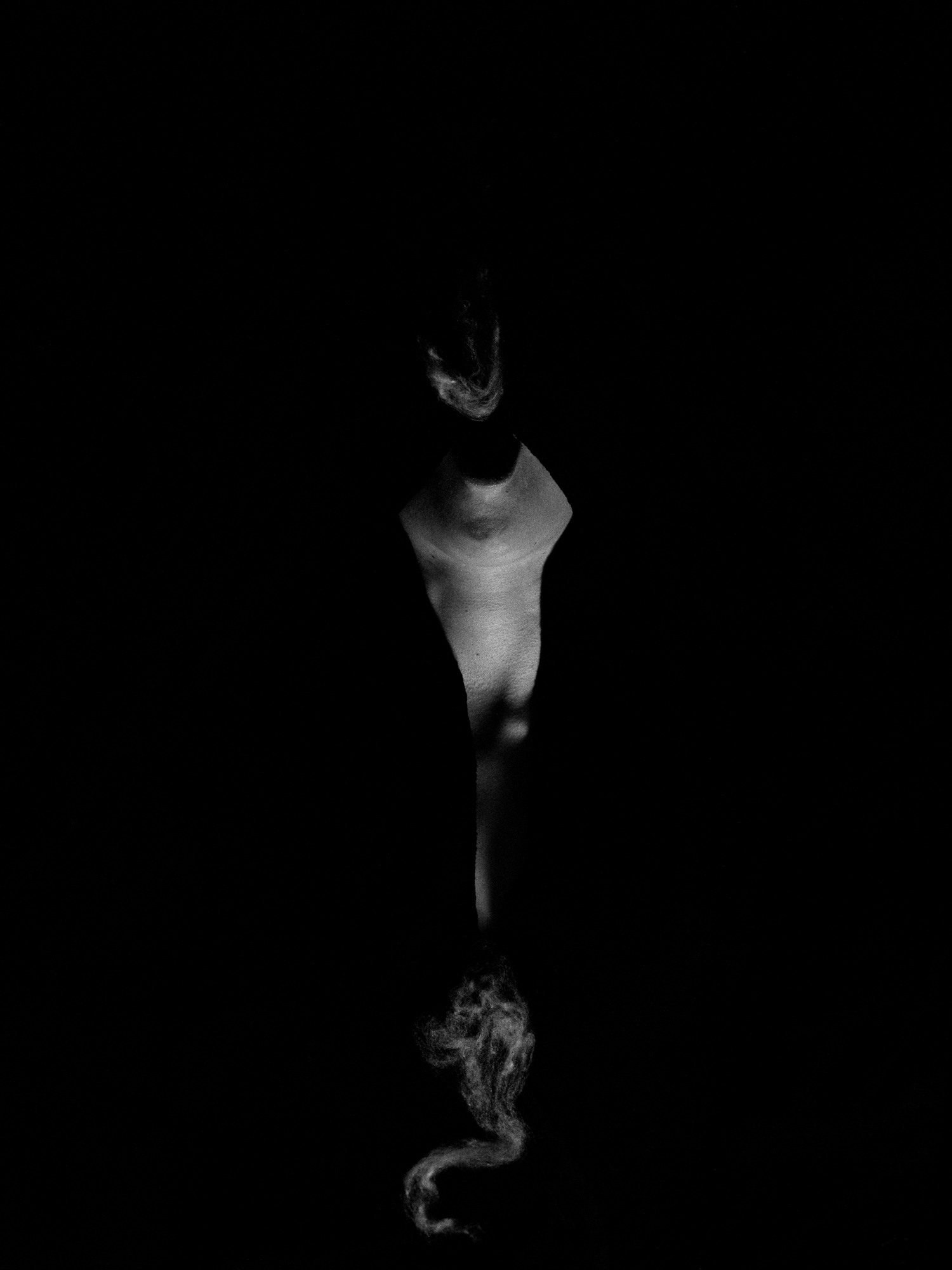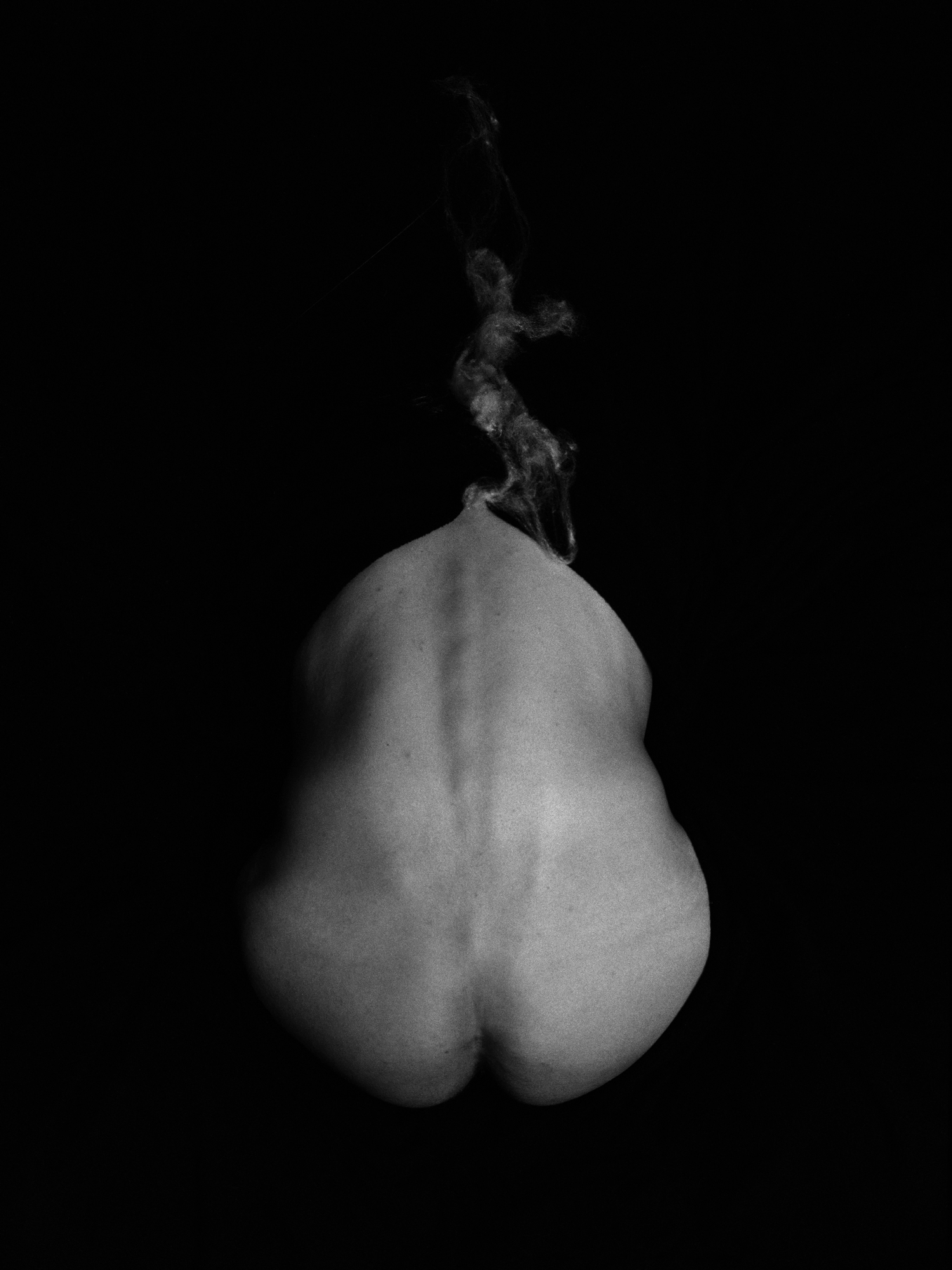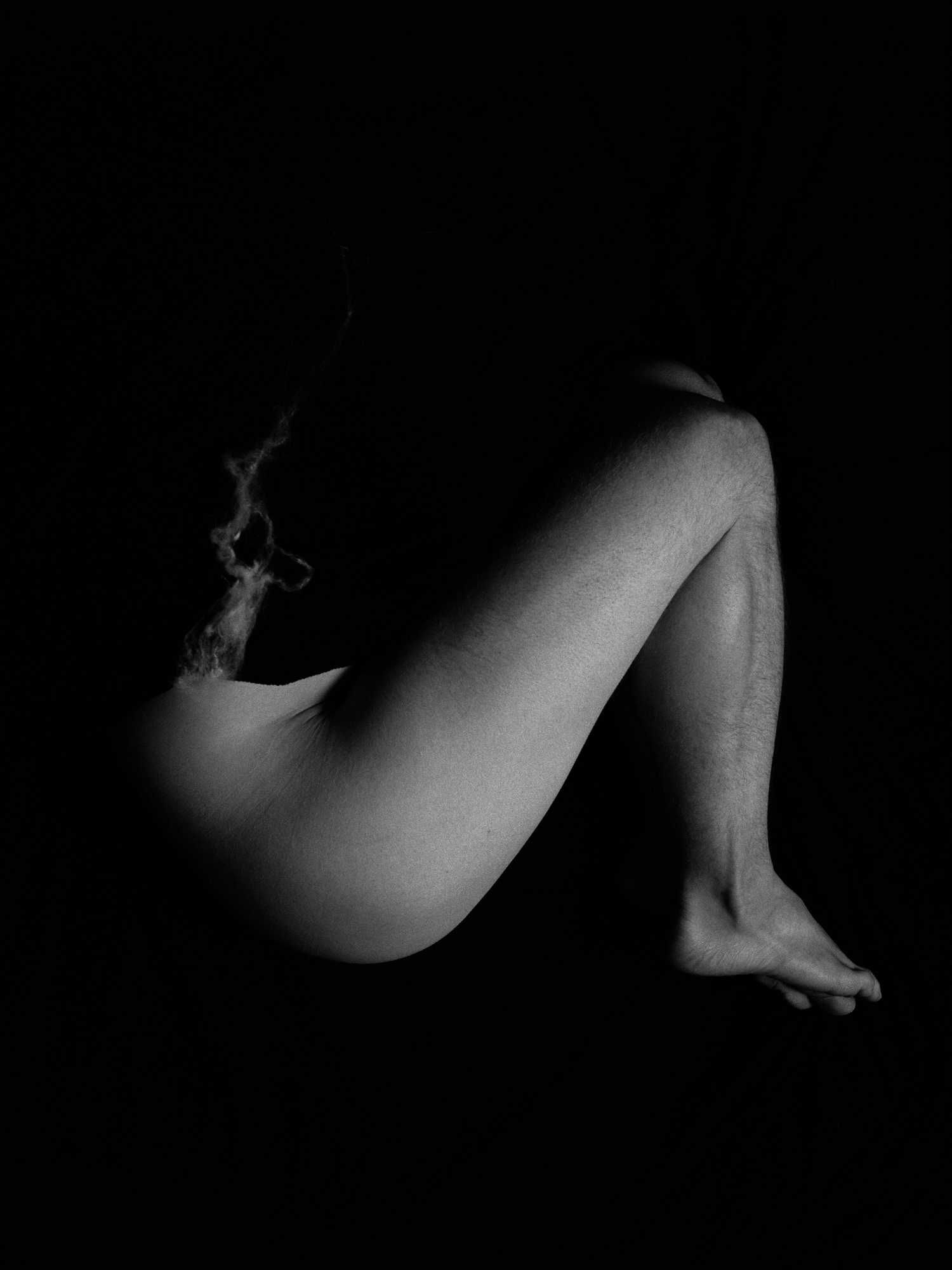











A decade ago, five days a week, for two years of my life, my daily commute involved biking down a
long stretch of road into the wind. It would blow hard against me in the morning, and then by the
afternoon it shifted and would blow hard against me on the way home. It seemed impossible—every
day I would bike into the wind both ways. I began to wish that I had the ability to see air currents. I
assumed that this daily confrontation was a part of a much larger weather system. I thought that if I
could only see the way the air was moving I could understand what was funnelling it against me.
Of course, we cannot see wind, we can only see its effects: how it acts upon other forms, the way it
picks up dust, blows hair and clothing, the way it makes trees sway.
-
In 1975, the onomatopoeia BAMF was introduced into popular culture. The word first appeared in an issue of Marvel's The Uncanny X-Men to accompany the character Nightcrawler's ability to teleport. Often written in all caps, it would appear embedded in an illustration of a cloud of smoke as Nightcrawler's body appeared or disappeared. In many cultural circles, the word has become synonymous with the act of teleporting and is often used casually in its stead. The word itself, though, was not intended as a synonym for the act of teleportation but as a sound to accompany it, the sound of air rushing in to fill the space where the body once was—a subtle shift of certain molecules leaving a space and new ones moving in to occupy it, a change invisible to the eye.
-
Over the past decade or so, queer spaces with both long and short histories have closed their doors in Edmonton, including those in the very space this gallery now occupies. The remnants of these spaces now exist primarily on old message boards and Facebook groups that will also likely one day be gone. I suspect it is hard to pinpoint any one reason why so many of these bars have closed. Just like the wind, we can only see the ways these forces affect bodies, forms, and spaces. I wonder about the long-term implications of these changes. Queer spaces are sites for community building, for connecting, for hooking up, for getting out, for being seen, for being hidden. They are also places for staying informed and for organizing. And they are places of friction. They exist as a visible alternative to the norm, a visual reminder to people outside queer communities that such communities exists. By existing in a physical space and a public space, queer bars inevitably end up existing in our brains as well. Because they are visible to the eye, they are visible to the mind. As a result, these spaces and all they represent become part of our consciousness. They bring to the surface things we think about, things we repress, things we imagine, things we try not to imagine.
-
I have a memory of a moment that I cannot place in time. I was standing in line at Buddy's, a gay bar that used to exist on Jasper Avenue. As I stood there, a truck drove by and a man leaned out the window and yelled “fag” or “faggot,” I can't remember which. It was not an uncommon occurrence at Buddy's but for some reason, this one time really sticks in my brain. I watched him hanging out the window staring at the line of people waiting to get in. I remember being angry. I remember being uncomfortable. I remember being relieved once I got inside. Looking back, I realized that he was likely uncomfortable too. Something about seeing Buddy's and a handful of soon-to-be patrons made him uncomfortable enough to try and denigrate the people waiting in line; to try put a sort of mental distance between himself and the thing that made him uncomfortable.
-
For me, photography is about the limits of seeing. Just like wind, there are many forces that are invisible to the eye. They become visible only through the things they affect. Similarly, they are a part of larger systems that are hard to perceive in totality. As queer spaces disappear, something shifts. Some of it is visible. Most of it is not: the subtlety of air moving in to fill the space where something once was.
BAMF.
BAMF
2019, Latitude 53
-
In 1975, the onomatopoeia BAMF was introduced into popular culture. The word first appeared in an issue of Marvel's The Uncanny X-Men to accompany the character Nightcrawler's ability to teleport. Often written in all caps, it would appear embedded in an illustration of a cloud of smoke as Nightcrawler's body appeared or disappeared. In many cultural circles, the word has become synonymous with the act of teleporting and is often used casually in its stead. The word itself, though, was not intended as a synonym for the act of teleportation but as a sound to accompany it, the sound of air rushing in to fill the space where the body once was—a subtle shift of certain molecules leaving a space and new ones moving in to occupy it, a change invisible to the eye.
-
Over the past decade or so, queer spaces with both long and short histories have closed their doors in Edmonton, including those in the very space this gallery now occupies. The remnants of these spaces now exist primarily on old message boards and Facebook groups that will also likely one day be gone. I suspect it is hard to pinpoint any one reason why so many of these bars have closed. Just like the wind, we can only see the ways these forces affect bodies, forms, and spaces. I wonder about the long-term implications of these changes. Queer spaces are sites for community building, for connecting, for hooking up, for getting out, for being seen, for being hidden. They are also places for staying informed and for organizing. And they are places of friction. They exist as a visible alternative to the norm, a visual reminder to people outside queer communities that such communities exists. By existing in a physical space and a public space, queer bars inevitably end up existing in our brains as well. Because they are visible to the eye, they are visible to the mind. As a result, these spaces and all they represent become part of our consciousness. They bring to the surface things we think about, things we repress, things we imagine, things we try not to imagine.
-
I have a memory of a moment that I cannot place in time. I was standing in line at Buddy's, a gay bar that used to exist on Jasper Avenue. As I stood there, a truck drove by and a man leaned out the window and yelled “fag” or “faggot,” I can't remember which. It was not an uncommon occurrence at Buddy's but for some reason, this one time really sticks in my brain. I watched him hanging out the window staring at the line of people waiting to get in. I remember being angry. I remember being uncomfortable. I remember being relieved once I got inside. Looking back, I realized that he was likely uncomfortable too. Something about seeing Buddy's and a handful of soon-to-be patrons made him uncomfortable enough to try and denigrate the people waiting in line; to try put a sort of mental distance between himself and the thing that made him uncomfortable.
-
For me, photography is about the limits of seeing. Just like wind, there are many forces that are invisible to the eye. They become visible only through the things they affect. Similarly, they are a part of larger systems that are hard to perceive in totality. As queer spaces disappear, something shifts. Some of it is visible. Most of it is not: the subtlety of air moving in to fill the space where something once was.
BAMF.
BAMF
2019, Latitude 53
The building that Latitude 53 now occupies has a long history as a queer space. From 1969 until 2012, it
housed a variety of queer bars and queer-owned restaurants. In 2019, to honour the history of the building it is in, Latitude 53 redeveloped the space formerly known as The Community Gallery into a space to fundamentally support and
stimulate the emergence of new artistic voices. The space is called Garage, after Garage Burger, the queer
burger bar that formerly existed on the same site. As a part of the launch of the new space, I was asked to
create work that touched on the the history of the building and of queer spaces in Edmonton.
My work often uses visual media (primarily photography) and written langauge to try to reveal invisblie currents that shape and steer us. In thinking about Edmonton and the space that Latitude 53 now occupies, I was curios about the events that led to the closure of so many queer spaces and about the implications of those closures for future generations.
As I considered these questions, my mind kept returning to the word BAMF, an onomatopoeia from comic books I’ve read since I was a child. The sound describes the rushing in of air to fill the space of an absent body. It first came to mind as a metaphor for invisible forces and immediate replacement.
Through this work, I wanted to hold the space in a state of transformation. The bodies depicted in these images exist in a state of disappearing: not fully here, not fully gone. By arresting time in a moment of change, my aim is to give space to think about this change and how it might ripple invisibly into the future.
The eight images that became the final work were shot on medium format film. They were not created through the use of digital manipulation of any kind. All framed works are 40” x 52”.
My work often uses visual media (primarily photography) and written langauge to try to reveal invisblie currents that shape and steer us. In thinking about Edmonton and the space that Latitude 53 now occupies, I was curios about the events that led to the closure of so many queer spaces and about the implications of those closures for future generations.
As I considered these questions, my mind kept returning to the word BAMF, an onomatopoeia from comic books I’ve read since I was a child. The sound describes the rushing in of air to fill the space of an absent body. It first came to mind as a metaphor for invisible forces and immediate replacement.
Through this work, I wanted to hold the space in a state of transformation. The bodies depicted in these images exist in a state of disappearing: not fully here, not fully gone. By arresting time in a moment of change, my aim is to give space to think about this change and how it might ripple invisibly into the future.
The eight images that became the final work were shot on medium format film. They were not created through the use of digital manipulation of any kind. All framed works are 40” x 52”.